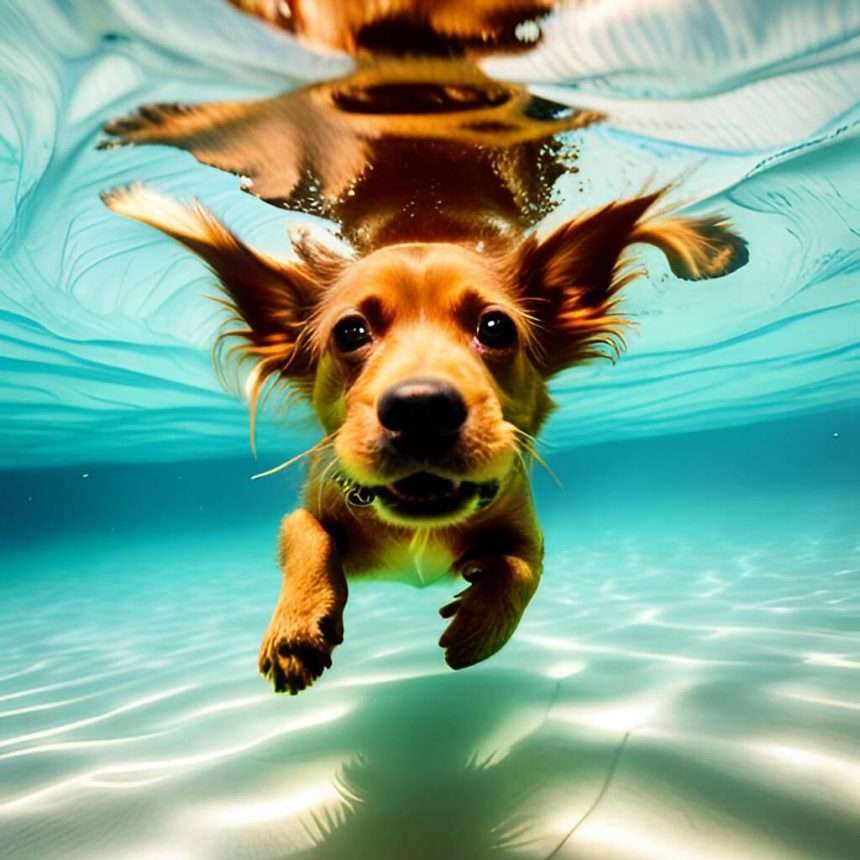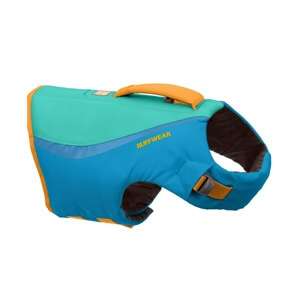As pet owners, we know that our furry friends can bring so much joy into our lives. That is why one of the most exciting things to do each summer is to plan an adventure that you and your dog can enjoy together. If you have a pool or access to one, it is a great place to start.
However, it is essential to keep in mind that not all dogs are comfortable in the water, and there are safety concerns to consider. In this blog post, we will cover some of the early thoughts you should consider when planning a pool adventure with your furry friend.
Evaluate your dog’s swimming abilities:
Like humans, dogs have varying degrees of comfort levels in the water, and not all of them are natural swimmers. Before you decide to take your pup for a swim, make sure that they feel comfortable in the water.
Start in shallow water, gradually letting them move to deeper water if they seem to enjoy it. Remember to monitor your dog closely, so they do not get into trouble once you get into deeper water.
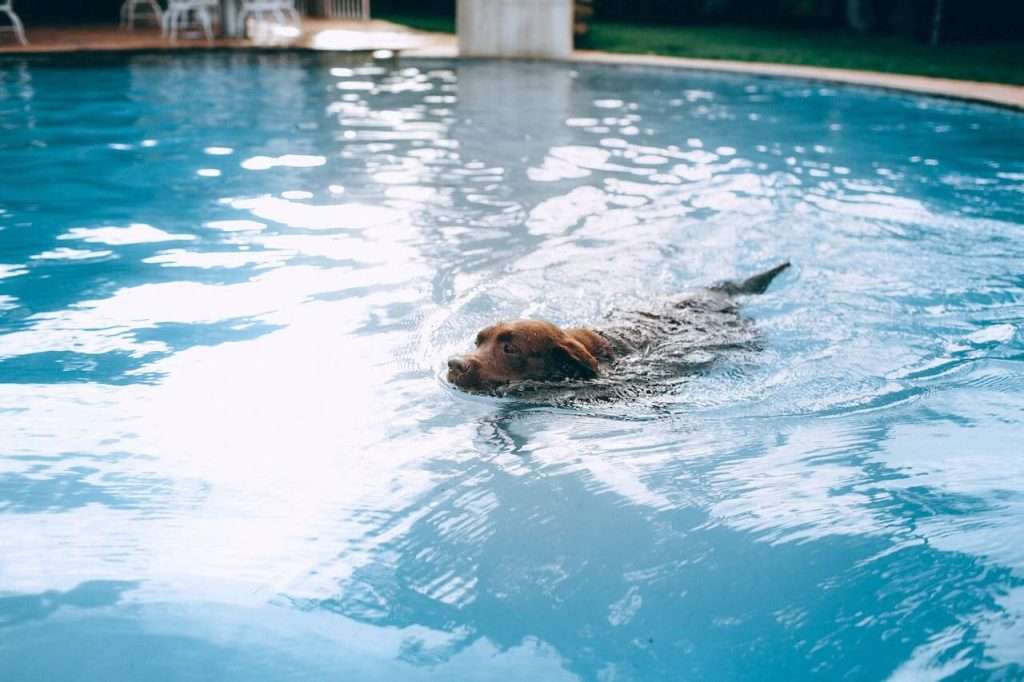
Consider purchasing a lifejacket:
If you are unsure about your dog’s swimming abilities, or you are planning on swimming in deeper water, invest in a pet life jacket. This will not only make sure that your furry friend is safe, but also reassure you that you are taking all necessary precautions to protect them.
Keep an eye on the weather forecast:
Swimming in a pool is fun, but it is a good idea to keep an eye on the weather forecast before you and your pup jump in. Make sure that it is not too hot, and your dog is not exposed to too much sun while swimming. Plan for frequent rest breaks in the shade and keep a tall glass of water for your dog close by.
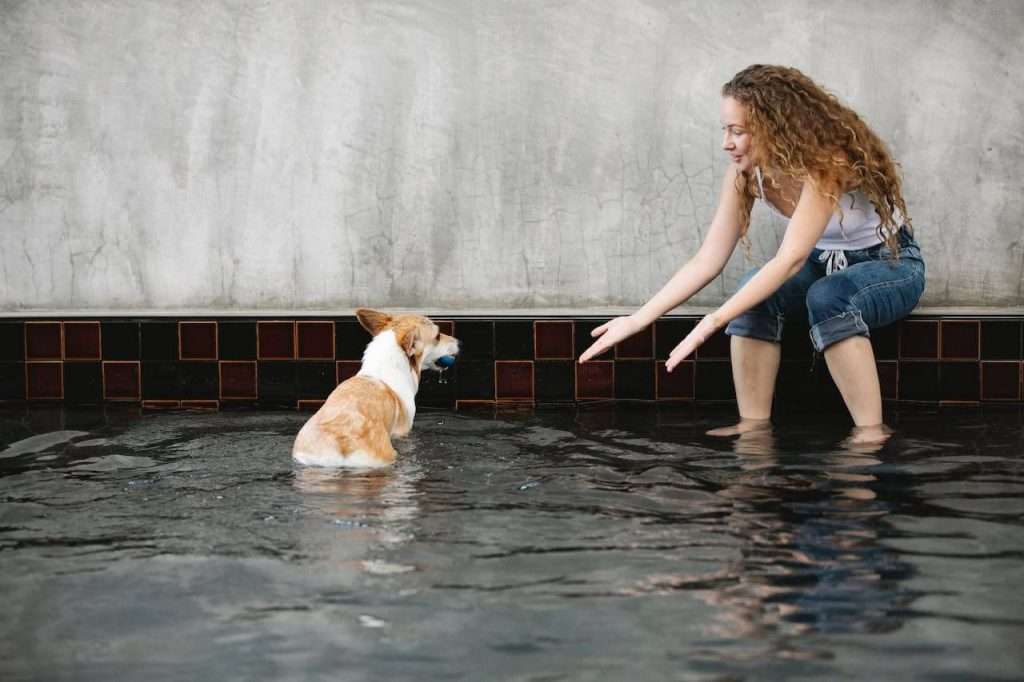
Familiarize your dog with the pool beforehand:
Training your dog to swim first before your pool adventure can help them feel comfortable in the water. Try using positive reinforcement techniques such as a favorite toy or a treat to make the learning experience enjoyable.
Remember, the more your dog feels familiar with the water, the more fun and exciting your pool adventure will be for both of you.
Take good care of your dog after swimming: After a swimming session, rinse your dog with fresh water to get rid of any chlorine or salt that could potentially irritate their skin.
Also, make sure to dry your dog adequately, especially their ears to prevent any infections. You can also invest in inflatable or foldable pools so your furry friend can have their own space to drain before you head back inside.

A Pool Adventure with Your Dog:
Pool adventures are a fun and exciting way to bond with your furry friend but remember to be safe and take the necessary precautions beforehand. Start by evaluating your dog’s swimming abilities and consider purchasing a life jacket before heading to the pool.
Make sure that you are familiar with the weather forecast, and do not expose your dog to too much sun. Familiarize your dog with the pool beforehand and take good care of them after each swim. With these early thoughts, you and your dog will have an unforgettable pool adventure.
Preparing for a Pool Adventure with Your Four-Legged Friend
Swimming is not only a great way to beat the heat, but it also provides lots of health benefits for both you and your furry companion! If you are planning to take your dog to the pool for the first time, or if you are looking for some tips on how to make the experience more enjoyable, keep reading!
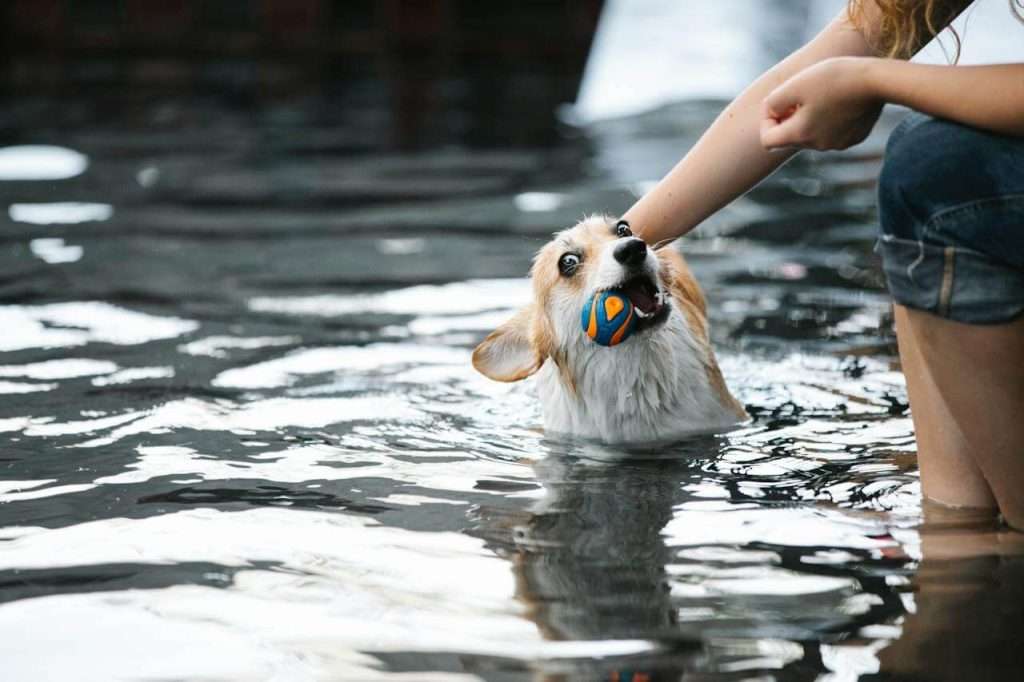
Basic Training
Before heading to the pool, you should ensure that your canine companion has basic training, such as responding to commands, and staying by your side. This will help your pup feel comfortable and safe while around other people and dogs in a public pool.
It is also important to ensure that your dog is aware of pool safety and knows how to get in and out of the pool without any issues. This way, you can focus on having fun together without worrying about safety.
Proper Swim Gear
Nowadays, there is a vast array of swim gear available for dogs, including life jackets, swim vests, and swim floats. These help your dog stay afloat and safe while swimming.
A life jacket is particularly useful if your dog is new to swimming or if they are not confident swimmers. Additionally, ensure that you have the necessary supplies such as towels, toys, and water to keep your dog hydrated.
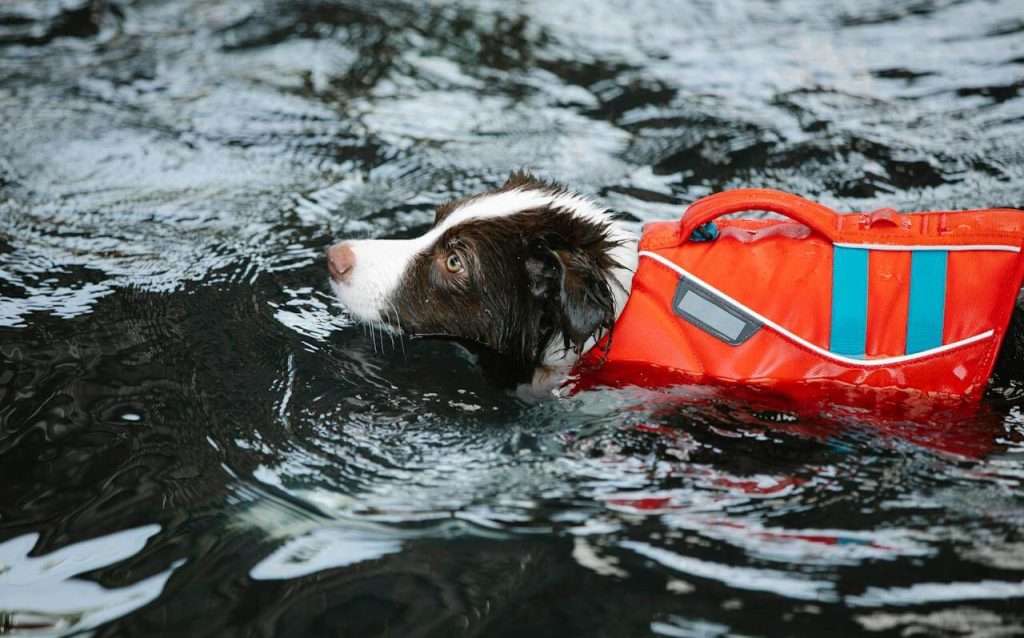
Be Attentive to Your Pup’s Needs
Ensure you keep an eye on your dog while swimming, paying attention to their behavior and body language.
If your pet seems exhausted, be sure to give them a break or provide shade to keep them cool. Additionally, always have an eye on potential hazards such as pool chemicals, filters, and the pool’s cleanliness. If you sense any danger, remove your pup from the area immediately.
Pool Owner’s Permission
Do not forget to check the pool owner’s rules and regulations to avoid any unwanted surprises. Some pools may not allow dogs, while others may require proof of vaccination and parasitic preventives.
Make sure that you adhere to their standards, to help ensure safety for both your furry friend and other pool-goers.
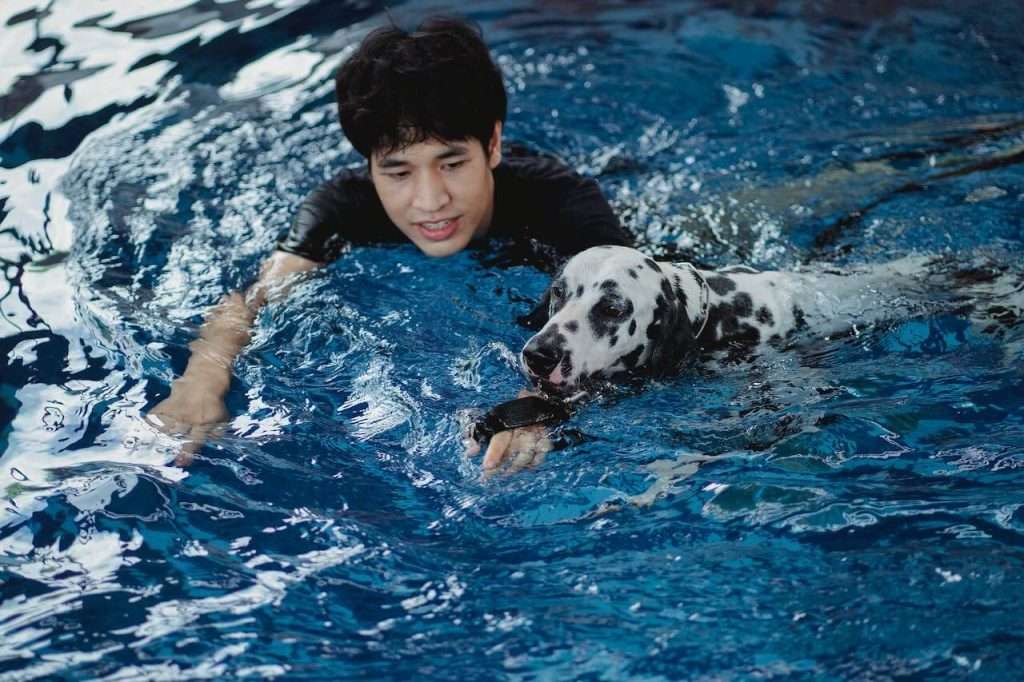
Preparing for a Pool Adventure with Your Dog:
Taking your dog for swimming at the pool can be an enjoyable and healthy experience for both you and your four-legged companion. With proper preparation, safety precautions, and attentiveness to your dog’s needs, it is time to prepare for a memorable dip in the pool and make those summer memories with your furry friend!
Here is a detailed checklist for a pool adventure with your dog:
Even if your dog is a strong swimmer, a life vest provides an extra layer of safety and helps them float effortlessly.
Essential for controlling your dog near the pool and ensuring they do not wander off.
In case your dog manages to escape from your sight.
Fresh Water and Water Bowl: Pool water contains chemicals, so provide plenty of fresh water to keep your dog hydrated.
Dog Food and Treats: Take along your dog’s favorite meals and treats.
Poop Bags: Essential for maintaining cleanliness around the pool area.
Doggy Sunscreen: Protect your dog’s skin from harmful UV rays.
Toweling Dog Robe: Useful for drying your dog after swimming and preventing them from getting cold.
Paw Balm: Chlorinated water can dry out your dog’s paws. Paw balm helps to moisturize and protect them.
Include pet-specific items like tick removers, antiseptic wipes, and bandages.
Provides a comfortable spot for your dog to rest and dry off.
Helps your dog get in and out of the pool safely.
Keep your dog entertained and encourage them to swim.
Provides a cool place for your dog to lie down and recover from the heat.
Like a beach umbrella, to protect your dog from constant sun exposure.
To provide traction for your dog and prevent slipping near the pool.
Protect your dog from bugs, especially during outdoor pool adventures.
To capture the fun moments.
Useful for quick clean-ups.
In case the original one gets lost or damaged.
If your dog is small, a carrier can be a safe place for them near the pool.
If your dog is small, a carrier can be a safe place for them near the pool.
If you plan on staying out after sunset, this will help keep your dog visible.
For drying off, laying on, covering the pool chair, etc.
Keep your vet’s number handy in case of emergencies.
Swimming can lead to water in your dog’s ears, which can cause infections. Regular cleaning post-swimming can prevent this.
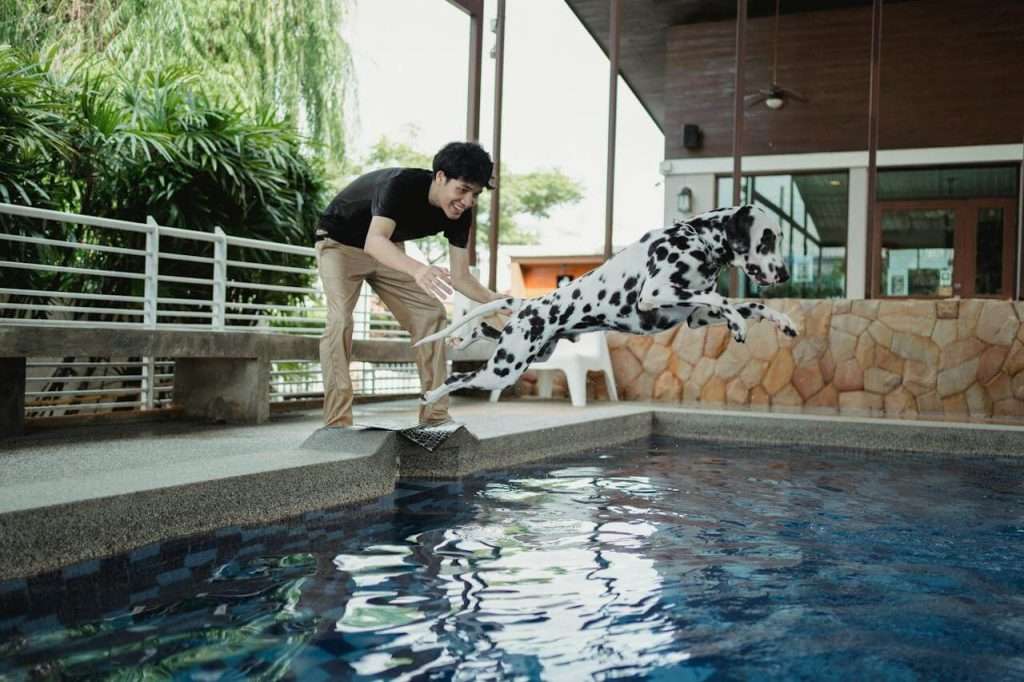
Spending the Day at a Pool with My Dog: What to Expect and Watch For
If you are planning to bring your dog to the pool for the first time, there are a few things you should know to ensure it is a fun and safe experience. In this section, we will go over what to expect and what to watch for when spending the day at the pool with your dog.
Check If Your Dog is a Swimmer
Before heading to the pool with your pooch, find out if they are comfortable around water. Some dogs, such as French bulldogs and pugs, are not natural swimmers and might struggle or even panic in the water.
If you are unsure if your dog can swim, take them to a safe and shallow body of water to test their comfort level. Remember, even if your dog is a strong swimmer, they can still tire out, so always have a close eye on them, even if they are wearing a flotation device
Establish Boundaries
Even the most well-behaved dogs can become excited and forget their training around a pool. Before you let your pup go off-leash, set some clear boundaries.
Teach them the “wait” or “stay” command to prevent them from jumping in the pool without permission. You may also want to designate a specific area for your dog to play and relax to minimize any damage or interference with other pool-goers.
Keep Watchful Eye
While spending the day at the pool with your dog, always keep a close eye on them. Even dogs that like to swim can become tired and panic, which can lead to injury or even drowning.
Make sure your dog takes frequent rests and never let them swim unsupervised. Watch for warning signs of heatstroke, such as excessive panting, drooling, and lethargy, and take your pup to a cool area with plenty of water if they show any symptoms.
Clean Up After Your Pup
Even if your dog is well-behaved, remember to clean up their messes after them. Bring plenty of poop bags to remove any waste and consider carrying a small spray bottle of diluted vinegar to clean up any accidents of pet hair or dander.
Cleaning up after your dog helps maintain the cleanliness and safety of the pool for everyone’s enjoyment

Know the First Aid You Might Need for a Day at a Pool with Your Dog!
It is important to prepare for any possible mishaps that may happen during these outings. From overheating to potential dog fights, knowing how to administer basic first aid to your four-legged friend can mean the difference between a happy day and a trip to the vet.
In this section, we will cover the top five first-aid scenarios you might face when spending a day at the pool with your dog, so you can ensure you and your pup have a great time together.
Heatstroke:
Dogs can easily overheat, especially during the summer months. Signs of heat stroke include excessive panting, red gums, a rapid heartbeat, and confusion.
If you notice any of these symptoms, immediately move your dog to a cooler area and provide it with water. Wet towels can also help to regulate your pup’s body temperature.
If after 10-15 minutes, your dog is not improving, it is important to seek medical attention from a veterinarian.
Drowning:
Pool safety for dogs is essential. If your dog is a swimmer, it is important to never leave it unattended. If your dog is not used to swimming, you may need to provide it with a life vest.
If your dog does start to drown, try to remain calm and pull your dog out of the water. Start with blowing into the dog’s nostrils to remove any excess water, while gently rubbing its stomach.
If your dog is not breathing, provide CPR compressions to the chest every two seconds. Be sure to seek veterinary attention if the dog is not breathing.
Dog Fights:
Dogs socializing at the pool can be a great way for them to bond, but dog fights can easily break out. One of the most important things you can do is to be vigilant, and closely monitor the interactions between your dog and others at all times.
If a dog fight does occur, try to separate the dogs as quickly and safely as possible. Keep your dog immobile and calm and assess it for any potential injuries. Any bite wounds should be cleaned and treated by a veterinarian, as they can lead to infections.
Chlorine:
Swimming pools are treated with chemicals to keep the water clean and free from harmful bacteria. However, these chemicals can irritate your dog’s skin, eyes, and nose.
Signs of chlorine exposure include red, irritated eyes, coughing, or excessive sneezing. Rinse your dog with fresh water if you suspect it has had a chlorine exposure, and if possible, avoid returning to the pool for a few days.
Burnt Foot Pads:
Concrete and other pool surfaces can become extremely hot during the summer months, which can lead to burnt foot pads. Signs of burnt or injured pads include limping, licking on one or multiple feet, and redness or swelling.
To care for burnt foot pads, rinse your dog’s feet thoroughly with cool water and dry them off. Avoid walking your dog on hot surfaces until the pads are fully healed.

Know the First Aid You Might Need:
By following these basic first-aid tips, you can keep your dog safe, healthy, and happy while spending a day at the pool. Never hesitate to seek veterinary attention if you are concerned, and always monitor your pup closely to ensure that it is having a great time.
So next time you pack up for a day at the pool with your furry friend, be sure to keep these potential hazards in mind and give your dog the best possible day out.
Keeping Your Dog Happy After a Long Day at The Pool
After a long and exciting day of swimming and playing, you will want to keep your dog comfortable and relaxed for the rest of the day. In this section, we will cover everything you need to know about caring for your best friend after a day in the pool.
Water safety
First things first, always make sure your dog is safe in the pool. Never leave them unattended or off-leash, because even the most capable swimmer may struggle and risk drowning.
If you have a pool fence, ensure that your furry friend is kept away and that no unforeseen dips in the water can happen. Always have a dog life jacket on hand to avoid any accidents.
Keep an eye out for any of the following: fatigue, coughing, vomiting, tremors, dilated pupils, and confusion since these indicate that your dog has had too much water and might be drowning.
Towel Dry & Brush
Make sure to towel-dry your furry companion directly out of the water to prevent water drips throughout your house, then, give them a nice brushing.
Towel dry your pal using a microfiber towel, which is more absorbent and will dry them faster than a regular towel. You do not want them to be wet for too long since the dampness can lead to skin infections and fungus.
Furthermore, brushing through their fur will help to eliminate matting, which is prevalent for water dogs like retrievers.
Refreshment Break
Afterwards, your furry friend will undoubtedly be tired and thirsty. It is important to give them water or anything else you might serve them to replenish their strength after a lengthy swim.
You can even make it more enjoyable by providing them with a new chew toy, bone, or treats. Just make sure the treats are appropriate for them and will not cause any digestive issues.
Post-Swim Bath
Dog’s fur coats can trap and hold onto chlorine from the pool for an extended period of time. Hence, giving them a warm bath right after they come out of the pool will be the perfect cleaning method.
Use warm, not hot, water and a gentle dog shampoo, nothing too harsh to ensure that they do not acquire any other skin infections. Cut back to every few weeks if your pet normally has dry skin, so you do not over-dry their skin.
Rest & Relax
After bathing and dressing your furry friend, allow them to rest and relax for a bit. If they look fatigued and want some alone time, you can let them be quiet and let them sleep.
Give them time to recover as excessive activity could cause aching muscles and tiredness. Cute videos of your furry friend napping perhaps?
Happy After a Long Day at The Pool
Taking care of your pet post-swim is an essential part of being a responsible pet owner. You will need to make sure that they are safe in the water and that they dry off properly to avoid infections.
Dogs enjoy gleeful and energetic lives, and a trip to the pool should be no exception. However, by following the above steps, you can ensure that your furry friend enjoys their time in the water while remaining safe and healthy.





